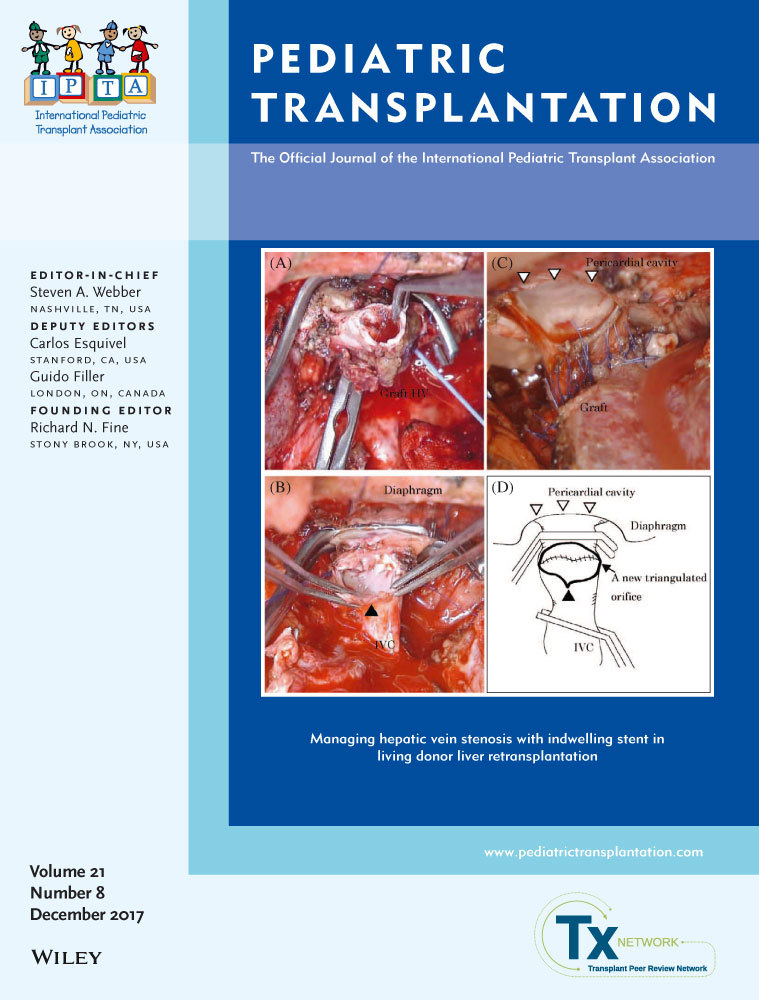Liver abnormalities and post-transplant survival in pediatric Fontan patients
Abstract
The impact of liver parenchymal abnormalities on survival post-heart transplant remains unknown in pediatric Fontan patients. We assessed pediatric Fontan patients who underwent heart transplant and had documented pretransplant hepatic ultrasound (U/S) studies. Liver U/S findings were classified as normal (Group 1), mildly abnormal (Group 2, hepatomegaly/vascular congestion), or severely abnormal (Group 3, heterogeneous echotexture/nodularity). Among 30 study patients, 8 were classified as Group 1, 14 as Group 2, while 8 met Group 3 criteria. Pretransplant liver biochemistry and synthetic function were similar in all groups. Six Group 3 patients underwent liver biopsy; 4 demonstrated perisinusoidal or centrilobular fibrosis, and 2 had cirrhosis. Overall mortality was 30% (n = 9). Median follow-up was 5 years (range, 0.25-13 years). One-year survival was similar among all 3 groups (P = .37), with a trend toward higher cumulative 5-year survival in Group 1 (100%). The majority of pediatric Fontan patients who underwent heart transplant demonstrated abnormal preoperative liver ultrasound findings. Heterogeneous echotexture or nodularity detected on U/S frequently indicates underlying liver parenchymal abnormalities. The presence of severe liver abnormalities was not associated with higher early mortality post-heart transplant in pediatric Fontan patients; however, late outcomes must be further elucidated.
CONFLICT OF INTEREST
This manuscript is a single-journal submission and has not been submitted to another journal simultaneously. We have no financial or other relevant conflict of interests to disclose.




